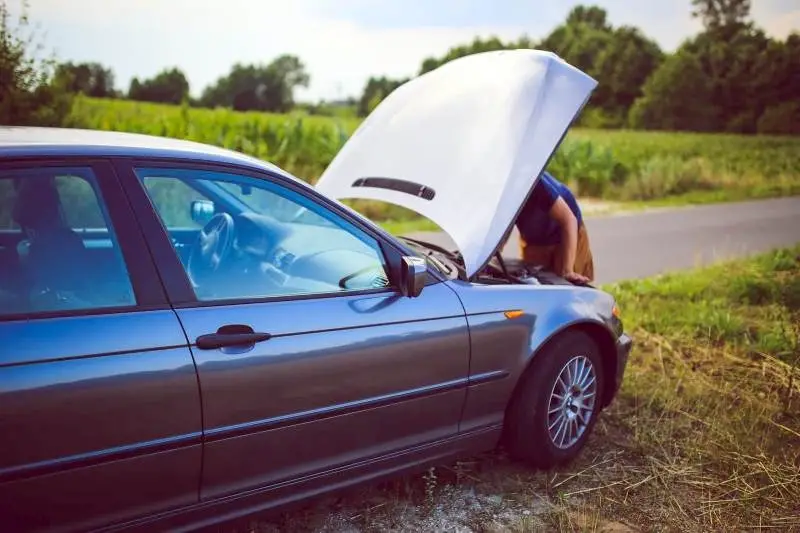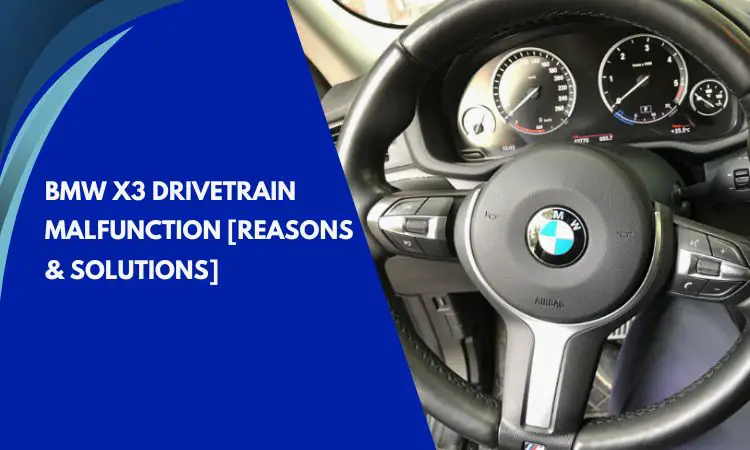BMW Shut Off While Driving Won’t Start | How You Can Fix!
Your BMW shuts off suddenly while driving and then does not start if there are problems with the
- Alternator
- Ignition Switch
- Battery
- Fuel Pump
In each case, if you successfully diagnose these as the source of the problem, you have to replace them. However, before troubleshooting the car, check if it has enough fuel or not. Often it can be low capacity or a leak in the fuel system that causes gas reduction.
To get a clearer idea of how to make sure that the BMW does not stop suddenly, keep reading this article.
Contents
Reasons Behind bMW shut off while driving won’t start Issue
Your BMW might stop driving and then not start at all for issues related to the alternator, fuel quantity, battery, or fuse. The table below shows some of the common reasons and how you can fix them.
| Reasons | Solutions |
| Faulty Alternator | Replace Alternator |
| Low Fuel | Add fuel to the required capacity, Fix any leaks in the pipe |
| Low Voltage or Drained Battery | Replace Battery |
| Faulty Ignition Switch | Replace Ignition Switch |
| Faulty Fuel Pump | Replace Fuel Pump |
Empty Or Extremely Low Fuel:
Before anything else check if there is enough fuel in the tank. If there isn’t then fill it up. A sudden breakdown of your car could just be that it has run out of gas.
If you have filled it up with gas and yet it keeps losing fuel then you need to check for leaks. It can be a pipe that is leaky and drains fuel.
Bonus: Find how Much a BMW Oil Pan Gasket Replacement Cost.

Faulty Alternator:
If the alternator in a BMW is not working properly, it can lead to the car stopping suddenly and refusing to start. The alternator’s job is to charge the battery and supply power to the electrical system when the engine is running.
When the alternator fails, the battery doesn’t get charged, and the electrical system lacks the power it needs to function properly. This can result in the engine abruptly shutting off while you’re driving, and the car may not restart.
Here are a few indicators of a faulty alternator:
- The battery won’t charge properly and will be discharged very soon
- Lights that are too dim or bright
- You will need to work on starting issues or stalling a lot
- A burnt rubber or wires smell will come out from the vehicle engine
- You will notice whimpering or growling sounds
- Dash-mounted battery-warning light
Solution: Replace Alternator
In this case, the best remedy is to replace the defective alternator. If you have a BMW X3, then check this video for a guide on replacing the alternator.
You can also get help from professionals to fix this problem. The price of an alternator replacement might range from $150 to $300.
Low Voltage Or Dead Battery:
Another terrible thing that could happen while you’re driving is the battery in your car dying. It frequently happens to almost all users.
You may examine the condition of the automobile battery with a multimeter. If the battery voltage falls below 11.7 volts, it has less than 25 percent of its overall charge and must be recharged.
Solution: Replace Battery
Following are the steps of replacing the battery in a BMW. But before you try to replace it, make sure the new battery is the same type and capacity as the one you’re replacing.
Step 1: Turn off the ignition in older BMWs. For newer models with electronic smart keys, keep the key a safe distance from the car.
Step 2: Find the battery. It’s often tucked away in the trunk under the trunk floor.
Step 3: Disconnect the negative terminal first, then the positive terminal.
Step 4: Take off the battery hold-down clamp and remove the old battery.
Step 5: Put the new battery in and secure it with the hold-down clamp.
Step 6: Connect the positive terminal first, followed by the negative terminal.
Faulty Ignition Switch:

This ignition switch is the main point of entry for the electricity from the battery into the ignition. Tiny metal pieces inside the switch may corrode, rust, and lose contact over time.
Solution: Replace the Ignition Switch
Following are the steps of replacing the ignition switch in a BMW.
Step 1: Make sure you have the new ignition switch and all the tools you need for the replacement.
Step 2: Begin by disconnecting the car’s battery to avoid any electrical problems while you’re replacing the switch.
Step 3: Take apart the steering column to reach the ignition switch, which might be behind the ignition lock cylinder.
Step 4: Once you’ve taken out the old switch, put the new ignition switch in its place, and then put the steering column back together.
Step 5: After you’ve finished replacing the switch, reconnect the car’s battery and test the new ignition switch to make sure it works correctly.
Faulty Fuel Pump:
Your fuel pump delivers the gasoline for your engine. This pump may get blocked or unclean over time. In this situation, the engine will stop while driving and won’t be able to start again.
Solution: Replace the Fuel Pump
Unfortunately, there is no way to bypass a malfunctioning fuel pump; you must either repair it or buy a brand-new one.
Following are the steps for replacing the fuel pump.
Step 1: Access the Fuel Pump
Step 2: Before you start replacing the fuel pump, make sure to disconnect the car’s battery to prevent any electrical issues.
Step 3: Disconnect the electrical and fuel line connections and unbolt the fuel pump assembly from the tank.
Step 4: After taking out the old fuel pump, put the new one in its place and reassemble the components.
Step 5: Once you’ve finished replacing the fuel pump, reconnect the car’s battery and test the new fuel pump to make sure it’s working correctly.
Bonus: Check out how you can deal with BMW’s yellow brake light.
What Precautions Should You Take To Get Rid Of This Type Of Issue?
Here are some of the precautions you can take to ensure that the BMW does not shut off suddenly while driving
- Ensure you have sufficient fuel
- Change the battery, engine oil, and coolant after a specific period
- Check the engine gaskets and rubber hoses
- Regularly inspect air filters and spark plugs
- Take immediate action for any minor issues
- Have your vehicle checked regularly by an expert mechanic
Bonus: Find out what causes DBC to malfunction.
Frequently Asked Questions (FAQs):
How Frequently Should A BMW Be Serviced?
Engine oil, filters, and coolant should be changed annually or every 10,000 kilometers. Check and replace gasoline filters after 20,000 miles or every two years. And change brake fluid at intervals of 30,000 kilometers or three years.
What Is The Cost Of Servicing A BMW Engine?
Every 10,000 miles, you should budget between $150 and $400 for maintenance. But, a significant service might cost up to $2,000 or more. However, the living area and parts availability might change this pricing range.
Can Stalling Harm A BMW Engine?
No, a stalling can not harm a BMW engine. It is essential to remember that halting is frequently a minor issue. And under typical conditions, this won’t harm the engine. However, if it isn’t fixed for a while, it might impact other parts of the car.
Conclusion
In conclusion, the BMW can shut off while driving and not start for different reasons such as a drained battery, faulty alternator, or malfunctioning fuel pump. You can fix this by replacing some of the components. Normally, some of these steps are quite difficult so make sure to proceed with caution.




